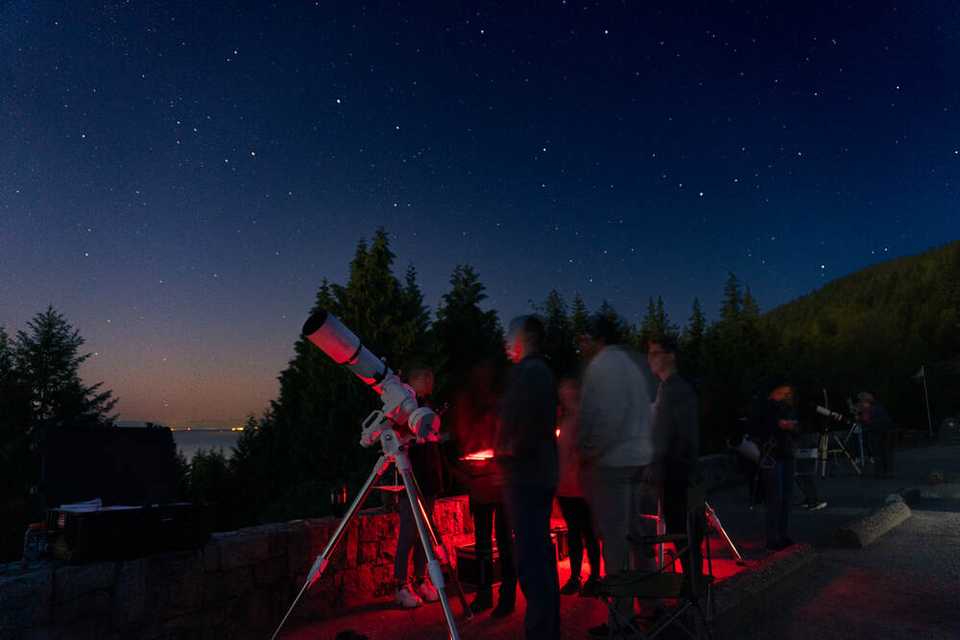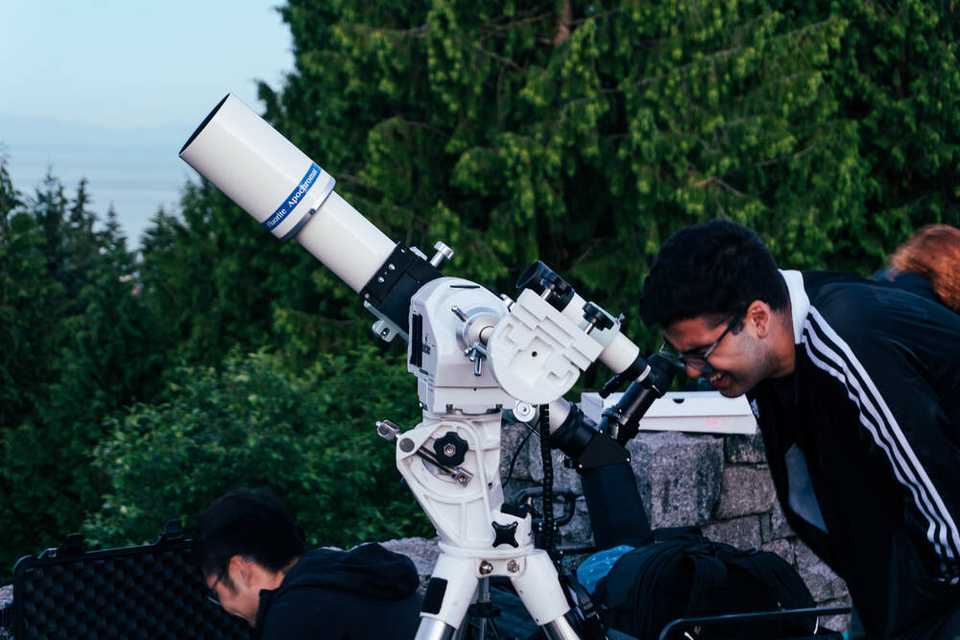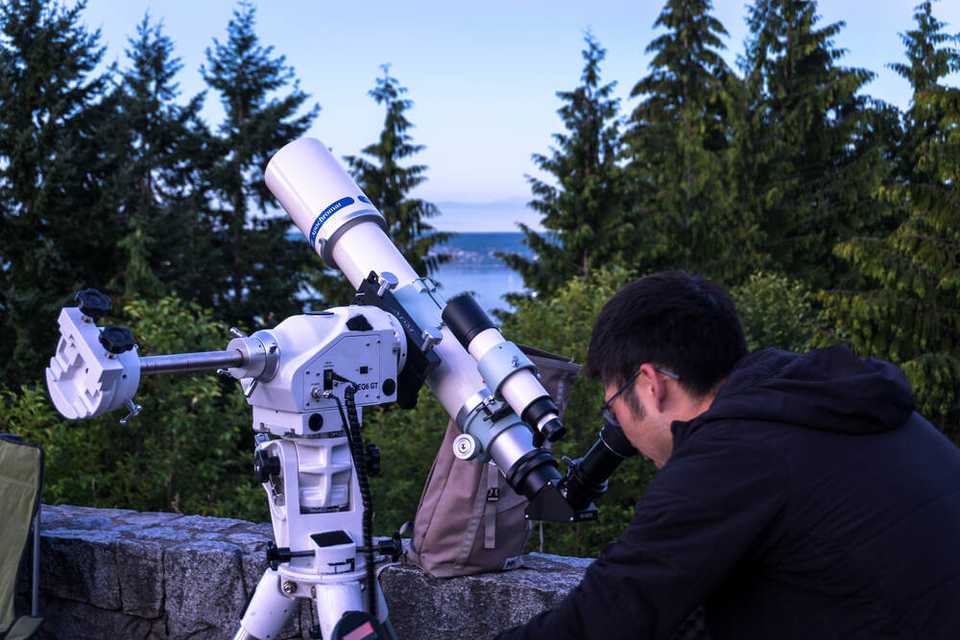Planetary Observation at the Cypress Lookout
Jupiter, Mars, and Saturn rise earlier and become higher in the sky before sunrise. With the astronomical forecast looking very stable, predicting above average to excellent seeing, I asked Sean from the UBC Astronomy Club, who is finally back in town after a couple of months of tree planting up north, if he’d be up for an early morning observation in the wee hours of Tuesday at Cypress Lookout to view the planets through the club’s new APM 140 apochromatic refractor. He helped write the grant that secured us the funds for this scope, so I wanted his first view through the scope to be a memorable one. He said yes.
I sent an invite out to the folks at the newly formed SFU Astronomy Club, as well as Jeff, and Kamryn opened the event to the UBC Astronomy Club’s Instagram followers. She had the crazy idea of hosting a flash observation event on campus prior to the planetary observation, resulting in yet another all-nighter for her and Sean, who happily volunteered to help out. They planned to wrap up the event at UBC and head straight to Cypress, along with any others who cared to join.

I woke up at 2:30 am, dressed, and walked straight to my car, joined by Martin (big thanks to him for taking great pictures of the event) and Sam from the SFU Astronomy Club who were committed enough to take the night bus over to my place. Martin was holding a box of Fresh Slice pizza for reasons still unbeknownst to me. We drove to Cypress with enough astronomical equipment to populate (and feed) a small observatory. On our drive, we admired the setting moon reflecting over the Pacific ocean, a startlingly pretty view that deserved more time than I could afford to give it.

Once we pulled into the lookout, we were surprised to see no fewer than 5 telescopes already set up, including the unmistakable aura of another Takahashi refractor. I said hi to Jeff, who was observing with his NP127 and was surprised to see Felix, who was also at the impromptu Manning Park star party a few weeks prior with his epic 18” Dob, and who was here for planetary observation with his beautiful and rare FC-100DL, a planetary specialist and a close cousin to my FC-100DZ. Both had been at the lookout since midnight viewing star clusters, galaxies, and various other deep sky objects while waiting for the planets to fly higher above the horizon. Although dawn was fast approaching, lots of stars were still visible, including the Pleiades towards the east.

I got to work, setting up my AZ-EQ6 and my FC-100DZ. For planetary, I find a tracking mount essential, especially for outreach events. I didn’t bother doing the 2-star align, and instead manually slewed my scope to Jupiter using my finder eyepiece, the Panoptic 35mm. I then aligned my finderscope and swapped out the Panoptic for my Pentax XW, and was pleased to see a good amount of detail on Jupiter, including multiple bands and a moon (Europa, I confirmed later in Skysafari) peeking out from behind Jupiter. The Great Red Spot wasn’t visible but I knew it would rotate into view in the next hour or so.
By this time, Sean and Kamryn arrived, along with other UBC Astronomy Club members. He brought the club’s new Skywatcher EQ6 mount so we could mount the APM 140 refractor - I suspect this will be the club’s most used combo. While we set up this scope, I invited the small crowd of people to view Jupiter through my Takahashi; for many, it was their first time viewing a planet through a telescope. They were amazed.

Once everyone had a good look at Jupiter, I slewed to the perennial crowd pleaser: Saturn. Its trademark rings slid into view, along with a handful of faint moons, looking magnificent as always. Now the crowd was getting excited.
Finally, I slewed to Mars, still small in the sky as the opposition is still several months away in December. I did, however, see a small amount of shading on the red planet, the first time this year I was able to discern any appreciable detail. Felix later told me that he saw the polar ice caps through his telescope.
Although I didn’t have a chance to do a detailed comparison between my FC-100DZ and the club’s APM 140, I did take a look at Jupiter and Saturn through both and was surprised I didn’t notice any significant differences in detail, although of course, the 5.5” provided much brighter views than the 4”. I did, however, see incredible detail on Jupiter under very good seeing at Manning Park a few weeks prior through the APM 140, so I’ll do another comparison under better conditions.
Also, what a lineup of scopes! FC-100DZ, FC-100DL, NP 127, APM 140… What a dream lineup of fine apochromatic refractors.

Around 3:30 am, the faint pink patch of the Great Red Spot on Jupiter rotated into view, one of the largest known storms in the solar system. My friend Umang, who I haven’t seen for several years, and her mom joined us, and I think they were delighted by the views of the planets.
I also had a chance to view Uranus through Jeff’s NP127 (a small, faint blue disk) and Jupiter through Felix’s FC-100DL and binoviewers with a pair of the legendary 5mm TMB SMC eyepieces (!!) - what a view! I’m tempted to get binoviewers myself for planetary viewing.

Around 5 am, as dawn approached, the seeing started to noticeably improve, with the detail on Jupiter steadying at high magnification. I pushed my FC-100DZ to 342x using the Televue 3x Barlow and 7mm Pentax XW and the image still held up - impressive performance for a 4”. The Great Red Spot had already rotated to be close to the middle of the disk, demonstrating the extremely quick rotation of the planet. Some light bands on Saturn were visible, as was the Cassini Division. Mount Baker loomed off to the southeast.

We packed up around 5:30 am. ~25 people showed up, including many members of the UBC Astronomy Club, and by all accounts, people were impressed by the great views of the planets.
Once I got home, I took a nap and woke up just in time to catch the live stream of the JWST’s image reveal. The images of the Carina Nebula and the Southern Ring Nebula were breathtaking; what a time to be an amateur astronomer.
